System Engineering & Design Architecture by Sander R.B.E. Beals (top novels .txt) 📖
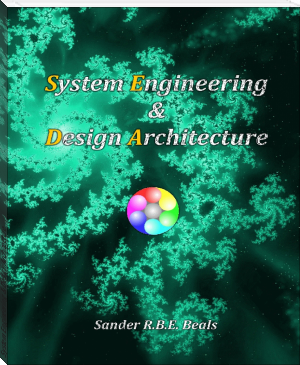
- Author: Sander R.B.E. Beals
Book online «System Engineering & Design Architecture by Sander R.B.E. Beals (top novels .txt) 📖». Author Sander R.B.E. Beals
Even in case you needn't repeat the action, taking notes and collecting relevant info is still advisable, in case your intended solution doesn't have the immediate result you were expecting of it.
Crucial is the top sphere: did we succeed in reaching our objective? If not we go further.
In that case we reread our notes, try to figure out where we went wrong, and devise a new action to achieve the objective anyway. This might mean adding an additional action to our solution process, or simply going back to the previous position and redoing the action slightly differently. Of course going back implies a backup or an undo mechanism....
With the improved action, we will be able to solve the problem sooner next time, and with more faith in our abilities.
There is still a slight problem though, and that is to devise a simple structure to channel all those notes into a river of information which will finally end in the sea of structured knowledge we want to be drawing our resources from. Since this is essential to getting our work done on time and above expectations, this document will describe how to set up such a system with simple means....
For me, the optimal structure is just a folder on my desktop in the Fence called Priority Stack, and first of all fill it with shortcuts to files and folders I might need in execution of the task at hand. If relevant enough, or the location of the originals isn't stable enough, I simply copy rather than shortcut them. Add to that a text or RTF file to make your notes in, and you're ready to go...
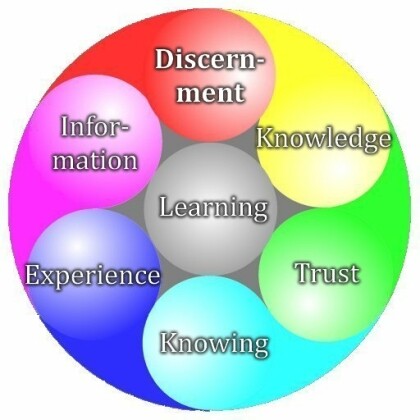 To begin with, we call the process of gathering information and structuring it into knowledge Learning. The SevenSphere on the right shows this process in detail, as a circular movement:
To begin with, we call the process of gathering information and structuring it into knowledge Learning. The SevenSphere on the right shows this process in detail, as a circular movement:
We start from what we Know, in the light blue sphere of Knowing.
Some experience provides us with data, which we may or may not be able to see as infor-mation.
Our discernment (more feeling than thought) may have doubts about the information, which will cause us to either see the knowledge as something we can trust or not.
Either way, the Knowledge becomes part of our Knowing, either in an enabling way if we trust it, or in a restricting way if we don't. We build on the trusted knowledge, while steering clear of the things we hold for impossible, or simply not true....
Now this sounds all pretty obvious, right? We do it all day without even thinking about it twice, or even once! Most of us tend to make few notes, because we can remember (not be totally aware of all implications of) quite a few things at the same time. Only once the inputs exceed the capacity of our short term memory, do we feel the need to revert to pen and paper, dictation devices or a keyboard and screen, often packaged as a tablet nowadays.
Keeping track of things requires a system of some sort, even if it looks like total chaos to someone else. I once came into someones living room, which had documents and news paper clippings all over it. The lady told me she thought Home was the most important, and I believed that, but at the same time I had a real hard time imagining that anyone could actually be living there. Also, she talked about being a bit scared of computers, but at the same time her home had at least three of them in obvious sight. I was invited to help her with her computer, but did a piss-poor job: by overlooking one simple fact I had witnessed with my own eyes, I unfortunately installed a free office suite for her, to replace the Microsoft package that had no valid license key. Unfortunately, since she was only using Outlook, it never occurred to her that she was in fact using Microsoft Office. So when I asked her, she said no and I figured it safe to uninstall Microsoft Office, and replace it with something else. I totally forgot about having seen Outlook start up earlier, and the uninstall didn't warn me that I was about to lose all locally stored E-mails. Shit happens, but I've never been so sorry for making a mistake! Later she called me, that someone else had fixed it, but she didn't need to see me again, although there were no hard feelings. I could understand that...
Point in case: what seemed like total chaos to me, was her system for keeping things organized. Much like Lara Croft's engineer carefully put aside the screws he took out of the clock in separate quadrants as he called them: that was his system to "Know where they all came from". And just at this time, Level 42 plays "Lessons in Love": "All the homes that we were building, we never lived in. Could be better, should be better, lessons in Love". So yes, home is important, and to me it is a sparsely decorated but relatively decent family home. Yes, it needs a woman's touch, but I've just not yet found Miss Absolutely Right for Me! On the other hand though, hints about her being around abound in my immediate environment...
A Higher Note...We document stuff in many ways, from a simple Post-It note on a laptop to hint at the password to a fully cross-referenced series of volumes defining the communication between DICOM standardized medical equipment. In general, information in written form tends to proceed from simple to more complex, and from standalone to more connected. The believability of more complex documentation may be higher, but if the simplicity is lost in the process, then the reader has a problem in the way that he or she is no longer able to correctly deduce the knowledge from the information. A note on a laptop may be too simple to get something useful from it because an unknown reader is missing the context, but the logically complete information in the DICOM standard (some 4900 pages in 20 volumes) is only readable for certain people who already have enough of a basis on DICOM to be able to comprehend it.
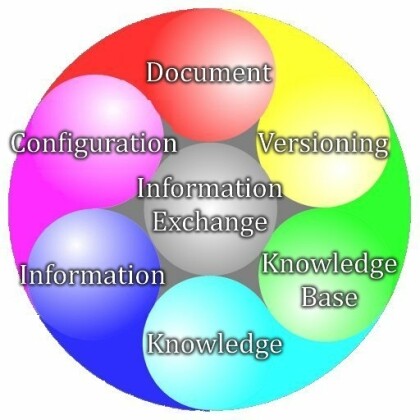 We use many different forms of documents, from leather bound volumes with ancient texts to paperbacks or HTML and XML documents on the Web. Documents in any form provide (structured) information, rather than knowledge. Why that is so? Easy: we write it from our knowledge, but the reader experiences it from his or her knowledge. Since these two are by no means identical sets, there is a process of learning involved again, to turn the information back into knowledge for the receiving party. The amount of structure inside the information is crucial to its being understood, as we shall see later.
We use many different forms of documents, from leather bound volumes with ancient texts to paperbacks or HTML and XML documents on the Web. Documents in any form provide (structured) information, rather than knowledge. Why that is so? Easy: we write it from our knowledge, but the reader experiences it from his or her knowledge. Since these two are by no means identical sets, there is a process of learning involved again, to turn the information back into knowledge for the receiving party. The amount of structure inside the information is crucial to its being understood, as we shall see later.
A Document in itself is quite unique, but we must relate it to the product for which it is intended, and we must give it a version so we can keep the changes apart in order to make sure we don't describe features in a manual that the product simply doesn't have yet. Version numbers separate the document changes in time, and configuration documents the structure of documents. Now in order to keep our story generic, we can say that what goes for Documents also goes for physical parts and even virtual parts like software: there are versions in the development because parts are improved and upgraded, and there is configuration info like design drawings which document how the various versions of different parts and documents fit together to make a whole product.
In order to correctly identify parts or documents, we need a unique label, which defines them in both versioning and configuration. But it is a little more complicated than that: since relationships between one part and another one can be M:N (like a 747 having 4 engines which share certain other subsystems), we must be able to properly document such complex relationships. This is stuff that needs to be left for later, because first of all we should look at the process of Change, in the way it shows in our design and support efforts.....
On a side note, XML would be a quite handy format to describe such information. Since we can define the tags ourselves, it is more flexible than other approaches.
And of course we know from natural language that unique identifications tend to be blown out of the water by the torpedoes of ambiguity: labels tend to get several meanings, since their similarities in certain areas are binding while the context of the language around it keeps them apart. Now I was thinking of this all the way home, and figured it would be a nice article on my weblog at http://beyond.moorelife.nl, but for some reason my trusted FireFox refused to let me in there. Since she and I have a longstanding working relationship, I didn't doubt her warning, and went for the next viable option, which was adding it in this book. Why? Simply because it has everything to do with Systems interaction!
Let's look at us puny humans again: if we've had a bit of education we know that like all matter, we are built up of molecules that bond together atoms, which have a core of positrons and neutrons, surrounded by a shell or cloud of negatively charged electrons. What is also a key piece of (immediately deduced) knowledge in our minds, but what most people never even stop to think about, is that our outermost layer is thus negatively charged, just like the outer layer of any object. That negative layer actually makes us look negative to outside systems, regardless of their nature. And because of that, we also know we seem negative to others despite the fact that the molecules are electrically neutral themselves.....
Now if that was the sum total of it, then we'd be in big trouble: no way to look positive to others, or even see them in a positive light! But luckily there is a way out: molecules are bound together by forces beyond the repelling forces of their respective atoms, and maintain a more or less stable shape despite or maybe even because of the clouds of electrons that embed each and every atom. I'm not smart enough to actually explain if the electrons also have a given effect on the shape of the molecules, but that is too much detail: there is such a thing as form, and our molecules make them up. That on far higher levels the human decides to look a certain way may be his or her choice, but then again we can't always help ourselves (if we don't believe in it). My next point is something even Newton already knew, because he made the toy, and it was soon named Newton's Cradle:
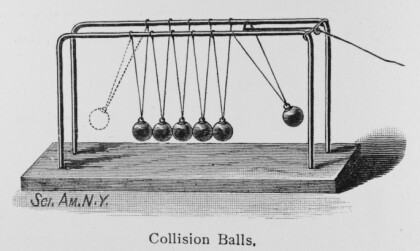
Of course I couldn't find an older picture, but this looks like it's from Scientific American, in New York. I dare not date it though... The crucial point this device makes, is that forces tend to be passed on from one form to the other, in as far as they have freedom of movement, that is. A nice online animation


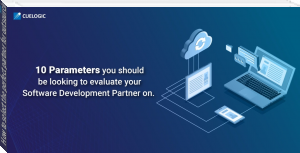

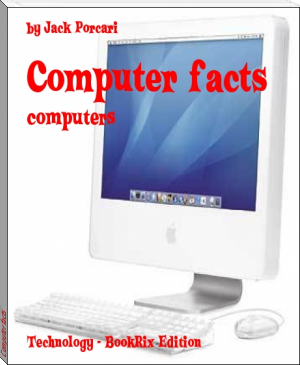
Comments (0)